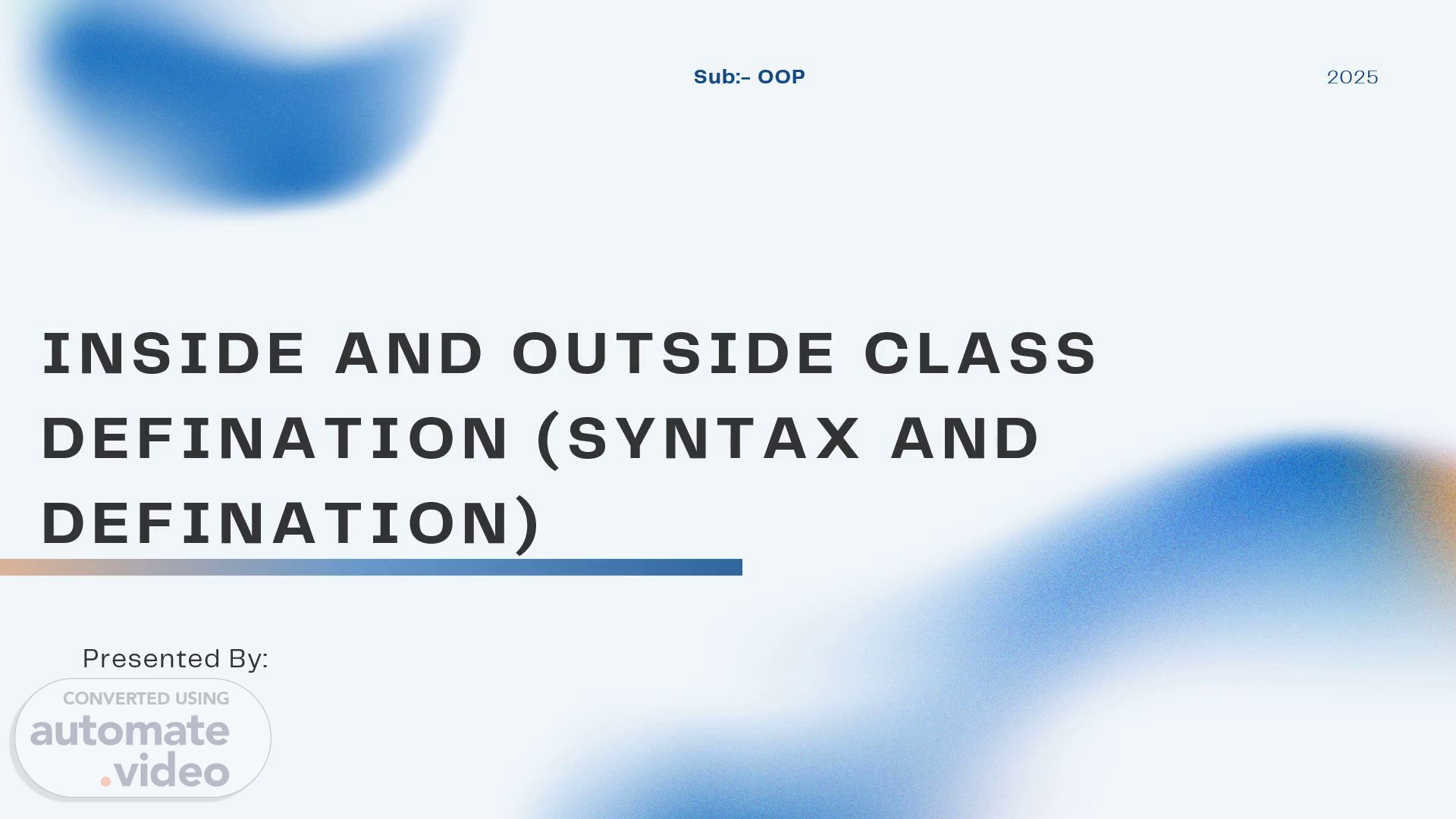Scene 1 (0s)
[Audio] Sub: O-O-P Inside And Outside Class Defination (syntax And Defination) Presented By: Bhushan Dongarwar.
Scene 2 (11s)
[Audio] Introduction To Oop Objects are created from classes (blueprints). A class has data members (variables) and member functions (methods). Member functions can be defined in two ways: O-O-P is a way of programming based on objects..
Scene 3 (32s)
[Audio] Inside Class Definition Definition: Member function is defined directly inside the class body. Treated as inline by the compiler (for small methods). Good for short, frequently used functions. Key Points: Easy and short to write. Inline → reduces function call overhead. Not recommended for large or complex functions..
Scene 4 (58s)
[Audio] Outside Class Definition Definition: In Java, you can declare a method inside a class and then define it outside the main method, but still inside the same class file. This keeps main() clean and separates logic from execution. Key Points: Helps in organizing large programs. Keeps main() simple. Commonly used in real world Java projects..
Scene 5 (1m 28s)
[Audio] Comparison & Conclusion Inside Class Definition: Methods directly written inside class. Good for short/simple methods. Quick and easy to write. Outside Main (But inside Class): Methods declared in class, called outside in main(). Good for larger or reusable methods. Improves readability and structure. Conclusion: Both approaches are correct in Java. Use inside class methods for small logic. Use outside main calling for reusable and structured code..
Scene 6 (2m 1s)
[Audio] Thank You Wrapping Up And Parting Thoughts.
